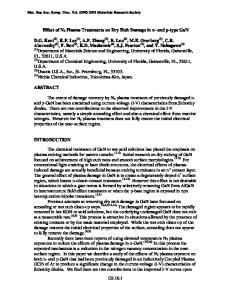Discussion of isomeric ratios in ( p, n ) and ( d , 2 n ) reaction
- PDF / 895,527 Bytes
- 6 Pages / 612 x 792 pts (letter) Page_size
- 102 Downloads / 278 Views
CLEI Theory
Discussion of Isomeric Ratios in (p, n) and (d, 2n) Reaction T. M. Bakhshiyan* Yerevan State University, Alek Manukyan Str. 1, Yerevan, 0025 Republic of Armenia Received May 7, 2015
Abstract—Isomeric ratios (IR) in the (p, n) and (d, 2n) reactions are considered. The dependence of IR values on the projectile type and energy, the target- and product-nucleus spin, the spin difference between the isomeric and ground states of products, and the product mass number is discussed. The isomeric ratios for 46 product nuclei (from 44m,g Sc to 127m,g Xe) obtained in reactions where target and product nuclei have identical mass numbers were calculated at energies from the reaction threshold to 50 MeV (with a step of ΔE = 1 MeV). The calculations in question were performed with the aid of the TALYS 1.4 code package. The calculated IR values were compared with their experimental counterparts available from the literature (EXFOR database). In the majority of cases, the calculated IR values agree well with the experimental data in question. It is noteworthy that the IR values obtained in (d, 2n) reactions are substantially greater than those in (p, n) reactions. DOI: 10.1134/S1063778816010051
1. INTRODUCTION A considerable number of studies devoted to isomeric ratios (IR) have been performed to date, but problems associated with correctly determining IR values still attract much attention. Investigation of isomeric ratios furnish important information about the properties of nuclear states, including the level density, the structure of low-lying energy levels, and mechanisms of nuclear reactions. This information is necessary for developing nuclear models. Experimental data on isomeric ratios are of value for astrophysics and radiation-protection physics, as well as for the production of radionuclides applied in medicine. In the present study, we analyze isomeric ratios for nuclei produced in (p, n) and (d, 2n) reactions where target and product nuclei have identical mass numbers. This choice enables us to deduce the dependence of IR values on the projectile type. The calculations were performed with the aid of the TALYS 1.4 code package [1]. This code package for simulating nuclear reactions makes it possible to calculate cross sections for the production of isomeric and ground states of products for various (n, γ, p, d, t, h, and α) projectile particles in the energy range between 1 keV and 200 MeV for target nuclei of mass number 12 to 339. The code package in question relies on the optical model and permits calculations for direct reactions, preequilibrium reactions, reactions proceeding through a compound nucleus, and fission reactions. The optical model is used for spherical, spheroidal, and deformed nuclei. In addition *
to single-particle states, collective vibrational and rotational bands are introduced for these nuclei. In relation to TALYS 1.2, TALYS 1.4 is updated by extending the possibilities for the choice of form for the level-density distribution; adding optical-model potentials, whereby the results ob
Data Loading...











